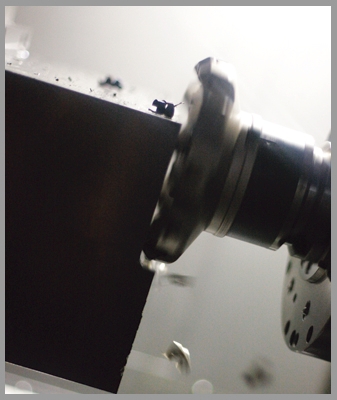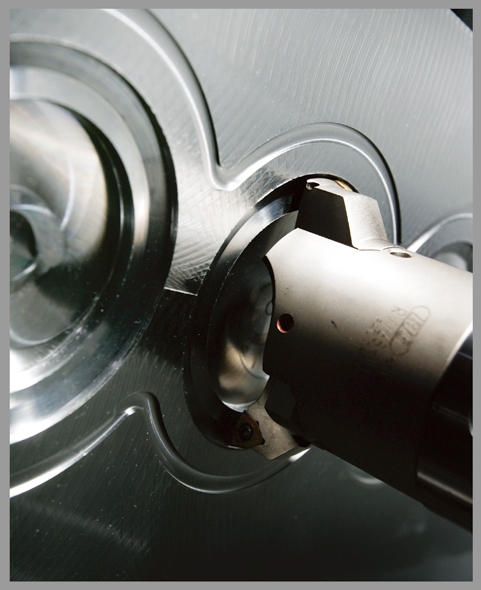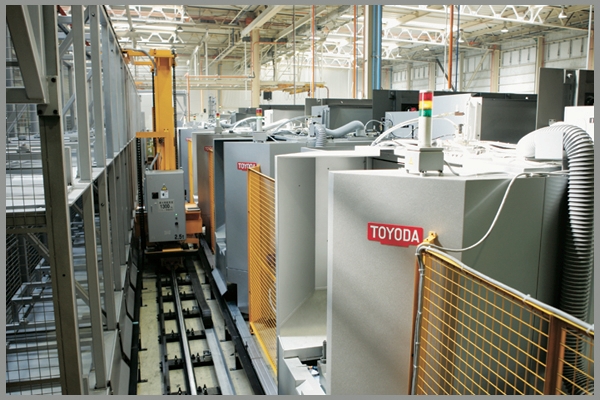Flexible Metal-Cutting System Capable of Integrating 20 Machine Centers and Increasing Spindle Utilization to Over 95%
Automation System Eliminates Downtime and Allows for Lights Out Production
An expandable Flexible Metal-cutting System (FMS) allows for the uniform integration of machines, pallets, and stations on either side of a central track. Toyoda’s FMS system leads the industry with unique features to greatly increase productivity. Integrating this intuitive system will keep jobs organized, lead to significantly reduced down-time, and allow for lights-out production.
The FMS system is customizable to effectively meet the needs of any business. It allows for storage of at least 8 pallets, and up to over 200. This automation system can also integrate up to 20 machine centers in a single system and is compatible with both 4 and 5-axis machines in the same system. Key features for the Toyoda FMS system includes on average 95%+ spindle utilization, multi-generational machine compatibility and dynamic scheduling.

Increased Spindle Utilization
Increasing spindle utilization is the easiest way to increase profit for any manufacturing production. More spindle uptime means more parts, which at the end of the day, means more revenue.
A normal Horizontal Machining Center running two pallets has an average of 55% spindle utilization. This basically means that the spindle is cutting only a little over half the available shift time. Toyoda’s FMS system has the remarkable capability to increase spindle utilization to over 95%.
What is even more remarkable is that the FMS system requires less skilled labor, resulting in a simpler, more streamlined production environment. The key to improving spindle utilization lies with FMS’s intelligent Dynamic Scheduling.

Dynamic Scheduling
Dynamic scheduling is another completely unique feature for that allows for maximum production efficiency through logical scheduling of jobs. This system can fulfill that without having to replace old machines.
This feature works to automatically determine the most effective schedule. As many unexpected occurrences can arise during a production, dynamic scheduling will actually work around problems, eliminating downtime. Here’s an example of a common situation:
If a tool breaks during lights-out production where no operator is around, normally your production would simply shut down, leaving hours of work unfinished. The Dynamic Scheduler has an intuitive system that identifies which tool has broken, and searches for a replacement in the magazine. If there is no replacement tool available, it will halt the current job, and start the next job scheduled, so that no time is lost. When the next shift arrives in the morning, they will be notified of the tool breakage, and will be able to easily replace the broken tool, continuing the halted production.

There are numerous other features to Dynamic Scheduling, such as the touch-screen control with a photo-based job selector. This simple system allows for practically anyone to load jobs into the queue, decreasing the time highly-skilled workers have to be in the shop.
Multi-Generational Machine Compatibility
A feature that is unique to the FMS system is the ability to link older machines and newer machines in the same system, or multi-generational machine compatibility. This means engineering a FMS between any Toyoda machines is not only possible, but simple to accomplish, making for an easy transition into an automation system.
Want more information? Click below.